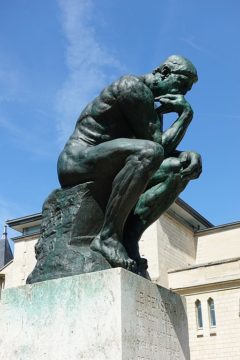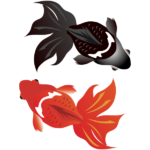by Jonathan Kujawa

On “The Joy of Abstraction” by Eugenia Cheng.
Category theory has variously been called “abstract nonsense,” “diagram chasing,” or the “mathematics of mathematics.” Some mathematicians find it a useful language, some a crucial tool for developing insights and obtaining new results, and more than a few have no use for it at all. I am currently teaching one of our first-year graduate courses. Because of the topic and my tastes, the students have seen a smattering of category theory. Another professor might skip that point of view entirely. This is all to say that even serious students of mathematics are unlikely to see category theory until graduate school.
Eugenia Cheng wrote a Ph.D. thesis entitled “Higher-Dimensional Category Theory: Opetopic Foundations”, has written more than a dozen research papers on all sorts of serious categorical topics, and was formerly a tenured professor at the University of Sheffield, UK. A decade or so ago, Dr. Cheng decided to give up the traditional academic track and put her energy into bringing mathematics to a broad audience. Dr. Cheng is now a Scientist in Residence at the School of the Art Institute of Chicago, a writer of popular math books, a frequent guest on TV shows, and an all-around evangelizer for thinking about math in novel and humanistic ways.
Eugenia Cheng recently wrote a most peculiar book. It is an introduction to category theory for people whose math education might have stopped with high school. With such modest prerequisites it is remarkable that by the end of the book you are wrestling with advanced topics that my first-year graduate students still haven’t seen! It sounds ambitious and even a little nuts. Dr. Cheng is about the only person in the world with the very particular set of skills needed to write such a book.
It starts by seeming to not talk about math at all. The first third of the book is a purposeful philosophical discussion of sameness, relationships, abstraction, and what it means to mathematically formalize a concept.
 It is precisely because category theory gives language to these philosophical questions that I find it useful. When are two things the same? What does it mean to be the same? How to describe the ways they are the same? If one thing is related to a second, and that one is related to a third, how are the first and third related? How to describe causes and effects, interactions, and self-interactions? Even just by having to put a name (or some mathematics) to it, category theory forces us to be explicit in our thinking.
It is precisely because category theory gives language to these philosophical questions that I find it useful. When are two things the same? What does it mean to be the same? How to describe the ways they are the same? If one thing is related to a second, and that one is related to a third, how are the first and third related? How to describe causes and effects, interactions, and self-interactions? Even just by having to put a name (or some mathematics) to it, category theory forces us to be explicit in our thinking.
For example, we all know that
1+5 = 5+1.
Such a simple statement still deserves an interrogation. If you have six children, I would imagine that having first one and then quintuplets would be quite a different experience than the other way around. When you are investing money every year for retirement, the outcome is quite different if the stock market grows slowly, then quickly compared to vice versa.
At its root, category theory is the mathematics of structures and the relationships between those structures. It might be numbers and the relationship between them might be their common factors. But it also might be neurons and the signals they send to their neighbors. Or AI neural nets that do the same. Or animals on the Serengeti and complicated interactions to determine the predators and the prey. Or languages and the relationships among their common linguistic ancestors. Or software packages that pass information back and forth. Or the components of the complex human immune system and how they stimulate or retard each others’ actions. Or nation-states and the complicated political signals between and within them. Or…
 Once you start to see that relationships between things are at least as important as the things themselves, you see categories everywhere. It is as much a philosophy and a way of thinking as it is mathematics. Like the water surrounding the fish in David Foster Wallace’s Kenyon College commencement speech, these relationships are only invisible because you never bothered to notice them before. Once you do, it gives you a valuable new way of looking at the world.
Once you start to see that relationships between things are at least as important as the things themselves, you see categories everywhere. It is as much a philosophy and a way of thinking as it is mathematics. Like the water surrounding the fish in David Foster Wallace’s Kenyon College commencement speech, these relationships are only invisible because you never bothered to notice them before. Once you do, it gives you a valuable new way of looking at the world.
Category theory also draws out when you implicitly take a systemic structure for granted. Does it have to be that the order of addition doesn’t matter? As Dr. Cheng writes, it is a valuable skill to have structural awareness and to be mindful of precisely what features are important in your thinking. The order of addition may or may not matter; it is best to be mindful either way.
Peter Singer made a similar point in a different context. If we are honest with ourselves, a child drowning in front of us spurs a different response than one dying of preventable disease in a far-off country. If we treat these two cases as different, then we should at least be self-aware of the structural difference in our value system that makes them so.
Even if you decide that 1+5 and 5+1 are the same, it can be worth tracking not just that they are the same but in what way they are the same. When talking about numbers, there is not much to say beyond the fact that 6 and 6 are the same number. But if you have six candies and six children, there are many ways to match up the six in one group with the six in the other. Any one of those matchings will prove that the number of candies equaled the number of children. But each individual matching includes extra information (That Abbas did or didn’t get the Werther’s Original, for example) [1].
Category theory says that there are layers upon layers of information in everything we think about, and it is to our advantage to pay attention to all the layers, not just the one in front of us.
This semester I am also teaching a special topics seminar for advanced graduate students. Coincidently, the topic is “categorification.” This is the mathematics of “upgrading” a mathematical topic by uncovering these hidden layers. This is what we did with the number 6. We were able to see new relationships by upgrading 6 from a number to sets of six things, and the equality to a correspondence between those sets. But there is no reason to stop there. In my seminar, we will upgrade sets to categories, categories to 2-categories, and beyond!
2-categories and beyond are the next evolution in category theory. Not only do you study objects and the relationships between them, but you also study the relationships between the relationships, the relationships between those relationships, and so on, possibly forever.
It may feel awfully abstract, but it is also something humans do all the time. To understand another human, we need to understand what they are thinking and also what they think we are thinking [2].
This higher category theory is the mathematics of the twenty-first century (at least my corner of it). If you’d like a taste of it, I recommend Dr. Cheng’s book. The first half is an accessible and thought-provoking insight into categorical thinking. The second half climbs into the rarified air of theoretic math, but it is worth a read to get a feel for what some parts of modern mathematics look like.
This might be the perfect time to read Dr. Cheng’s book if it sounds interesting. The Topos Institute is hosting a Book Club for folks interested in reading the Joy of Abstraction. Each week Dr. Cheng will post a video where she answers reader questions related to the book. Each chapter gets its own week, starting this week. You can also check out this video to learn more about Dr. Cheng and the Joy of Abstraction:
[1] With six candies and six children, there are 720 different ways of distributing the candies to the children. But even that isn’t the end of the story. After all, I have four nieces and I know that it might also be a matter of life-or-death what order the candy is distributed, even if the end result is the same :-).
[2] It’s enough to make you a little neurotic!
